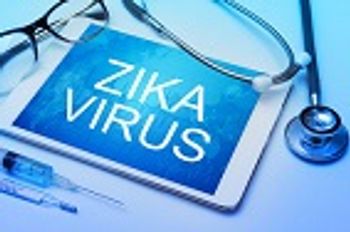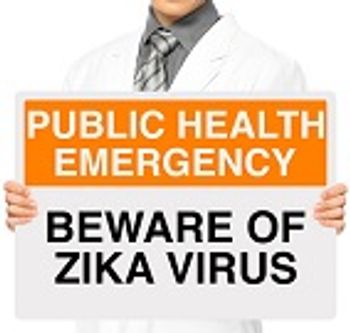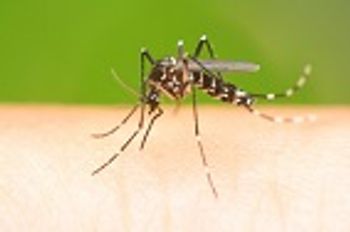
News has emerged of a case in Maryland involving the identification of Zika infection in a woman who had sexual contact with a man who did not know he was sick because he was asymptomatic.
Brian P. Dunleavy has been covering health and medical research for more than 25 years, for United Press International and EverydayHealth.com, among other outlets. He is also the former editor of Infectious Disease Special Edition. In addition, he has written on other subjects for Biography.com, History.com, the Village Voice and amNewYork, among others. He holds a master’s degree from the University of Missouri School of Journalism.

News has emerged of a case in Maryland involving the identification of Zika infection in a woman who had sexual contact with a man who did not know he was sick because he was asymptomatic.

A multidisciplinary team at Yale University School of Medicine have created a mouse model for vaginal Zika virus infection.

With 43 “local” cases of Zika virus infection now reported in Florida, and as far north as St. Petersburg, health officials in other Gulf states are ramping up responses in the event of potential outbreaks—even as there remains some disagreement as to the true nature of the threat of local transmission in the United States.

Public health experts are predicting that there will likely be localized cases of the virus in flood-ravaged Louisiana as well as in Texas before the end of the summer.

Chlamydia has posed a healthcare challenge for clinicians due to the serious complications associated with it.

An ongoing outbreak of cholera in Rayagada, India has reportedly claimed the lives of 5 people in the region some 950 miles southeast of New Delhi.

An international team of researchers has identified a potential role for certain monoclonal antibodies in developing a treatment for Zika virus.

Investigators at the National Institute of Allergy and Infectious Diseases (NIAID) and the National Human Genome Research Institute (NHGRI) believe they have found the key to developing a universal vaccine for influenza.

Through July 5, health officials in the state of Florida have reported 13 cases of the bacterial infection, and four deaths, in four counties in the state that lie along the Gulf coast.

Researchers in Guadeloupe, the French territory in the southern Caribbean Sea, have reported, for the first time, the presence of Zika infection in the genital tract of a woman with the virus.

Researchers from the University of California-San Francisco (UCSF) have provided a roadmap for how the Zika virus travels from the blood of an infected pregnant woman to her fetus, providing new clues to the process by which the disease leads to birth defects.

Researchers from the United Kingdom have demonstrated how whole genome sequencing technology can be used to track the spread of infection in Neisseria gonorrhea—an important finding given that the number of drug-resistant strains of the sexually transmitted infection (STI) has reportedly been increasing.

That may be the “$64,000 Question” facing clinicians in South America and the Caribbean, where 3 viruses linked with the Aedes aegypti mosquito have caused concurrent epidemics, resulting in confusion as efforts are made to diagnose and treat them.

The number of confirmed cases in the outbreak has been attributed to the reluctance of some to be vaccinated.

Although researchers have made progress in identifying potential medical countermeasures to hinder the spread of Middle East respiratory syndrome (MERS), the virus is still spreading.

Since May, there have been nine confirmed cases, with one fatality, in Los Angeles, Long Beach, and Orange counties. According to the California Department of Public Health (CDPH), most of those infected have been gay and/or bisexual men.

Exactly how to screen for and, thus, diagnose Zika virus remains a bit of a moving target for clinicians as the risk for localized transmission of the mosquito-borne disease rises for some parts of the United States with the arrival of summer.

As the incidence of tuberculosis (TB) continues to decline in low-prevalence settings such as the United States, there is some concern within the infectious disease/public health field that clinicians may not be aware of the latest diagnostic technologies available to screen for the disease.

The number of physicians and nurse practitioners aware of HIV pre-exposure prophylaxis (PrEP) and its potential benefits has increased dramatically in the years since it was first introduced to the market.

On June 17, the CDC announced that 1% of all blood donations analyzed in the American territory had tested positive for Zika, and that this could be an indication that the outbreak is poised to reach dangerous proportions.

New research suggests that modernized phages therapy may be useful in extending the lifespan of currently available antibiotics and reducing the incidence of antibiotic-resistant infections.

With vaccine supplies at alarmingly low levels a potential public health emergency of global proportions may be on the horizon.

US travelers concerned about contracting cholera during overseas journeys to areas where the disease remains a threat may now have options as they seek to reduce their risk.

Researchers at McGill University in Montreal revealed that the gene editing tool known as CRISPR/Cas9, which had previously been shown to hold some promise in removing HIV-infected cells from the human genome, may in fact be a “double-edged sword.”

An international team of researchers may have identified a potential animal model for use in the laboratory as part of efforts to better understand the pathogenesis of Middle East respiratory syndrome (MERS) coronavirus and, hopefully, find an effective treatment for it: alpacas.

A new report from the Centers for Disease Control and Prevention (CDC) suggests that many of the reported outbreaks involving Legionella bacteria since 2000 could have been prevented with better testing protocols and infrastructure management.

Incidence of syphilis is on the rise in Europe—particularly among men—according to a report released in May by the European Centre for Disease Prevention and Control (ECDC).

With reports in the mainstream media prophesizing doom with regard to the issue of antimicrobial resistance, a committee formed by the British government has released a report designed to properly contextualize the crisis and develop recommendations for addressing it.

Efforts to bring to market a vaccine for the fight against Zika virus, at least via the private sector, have been stalled over concerns regarding the “marketability” of these products, according to multiple reports in the business press.

On May 31, 2016, the Centers for Disease Control and Prevention (CDC) updated its interim guidance on screening for, and diagnosis of, Zika virus.